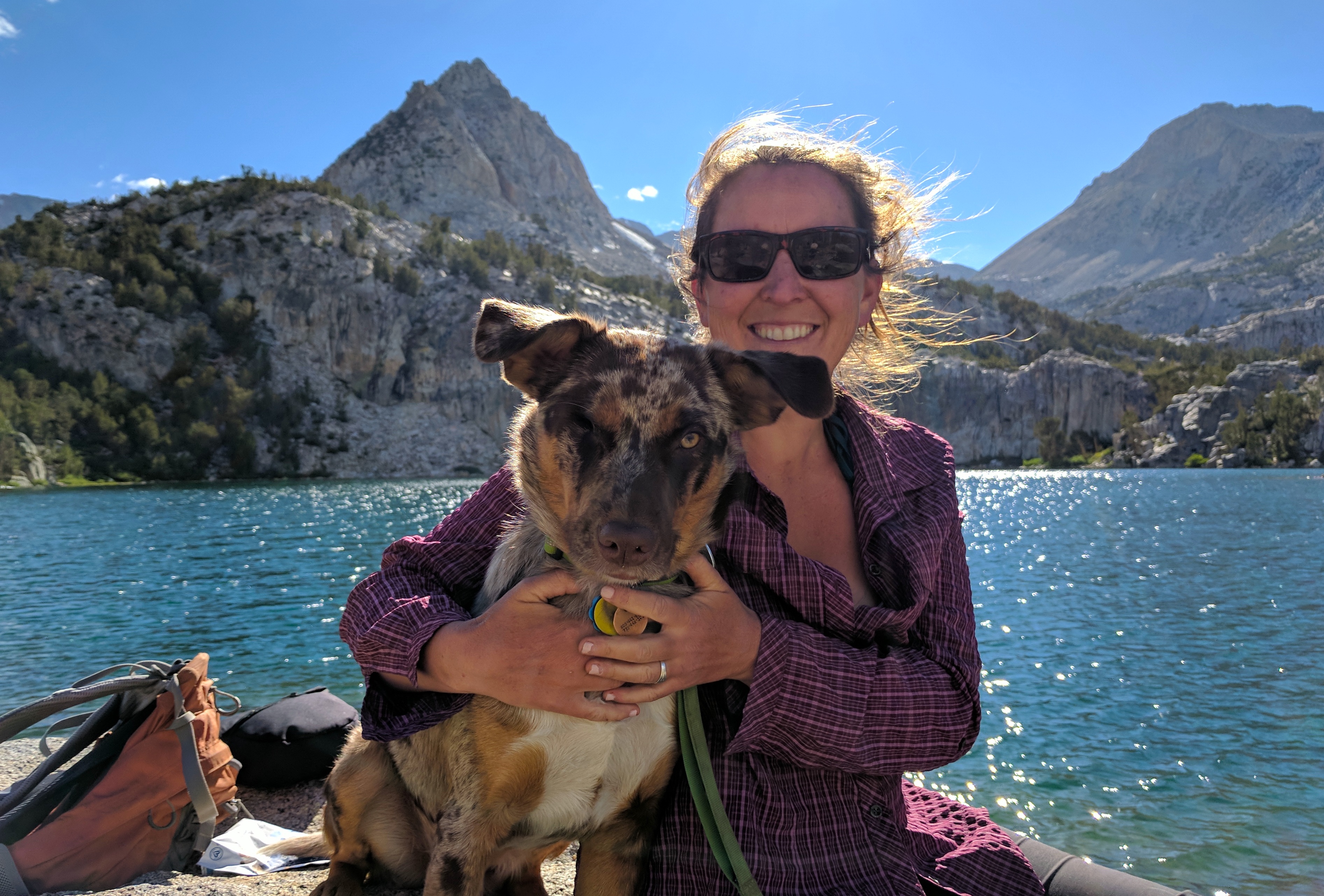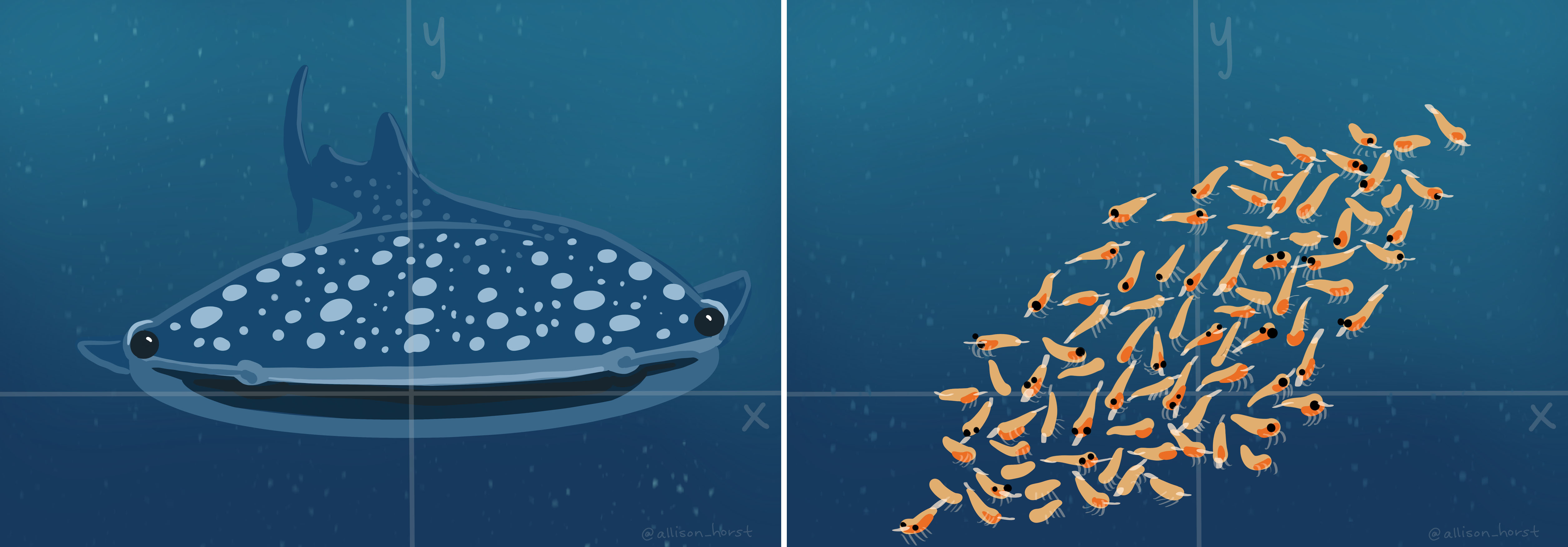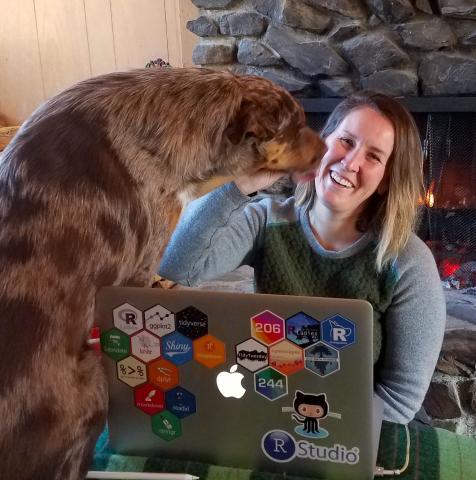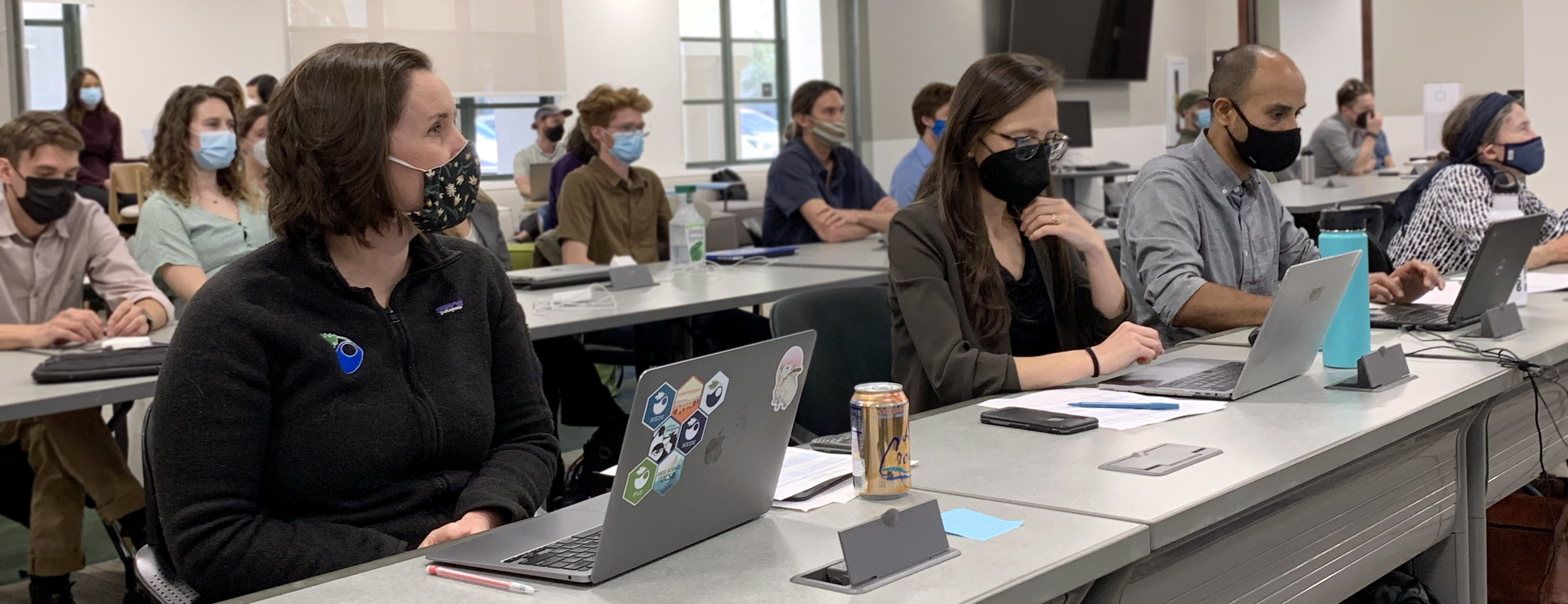As an increasing number of industries look to hire environmental data scientists, students looking to enter the field need a fast path to make their career shift. Bren’s Master in Environmental Data Science is a 11-month degree program that provides exactly that. MEDS students begin the program with an immersive, full-time curriculum to learn the essential quantitative skills they’ll need for their new careers.
A rigorous program like this can seem intimidating, but in the MEDS program, students have faculty like Allison Horst (PhD ’12) in their corner, dedicated to helping them succeed. Allison is one of the first professors students work with as part of the summer curriculum. She teaches Essential Math for Environmental Data Science (EDS 212) and Scientific Programming Essentials (EDS 221), courses she has designed to address rigorous subject matter while also welcoming students from a diverse range of backgrounds.
“One of the biggest misconceptions people have about data scientists is that they are people who were born as computer scientists—that somehow they emerged into the world coding,” she says. “But data scientists can and do come from all backgrounds. We need people who are creative, who are good writers, who pay close attention to detail, who have good design sense. Whatever your existing skills and talents are, they’ll probably be beneficial in data science.”



